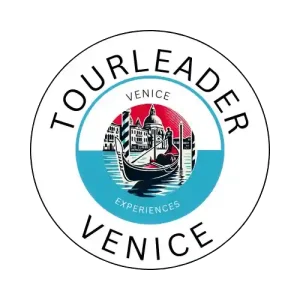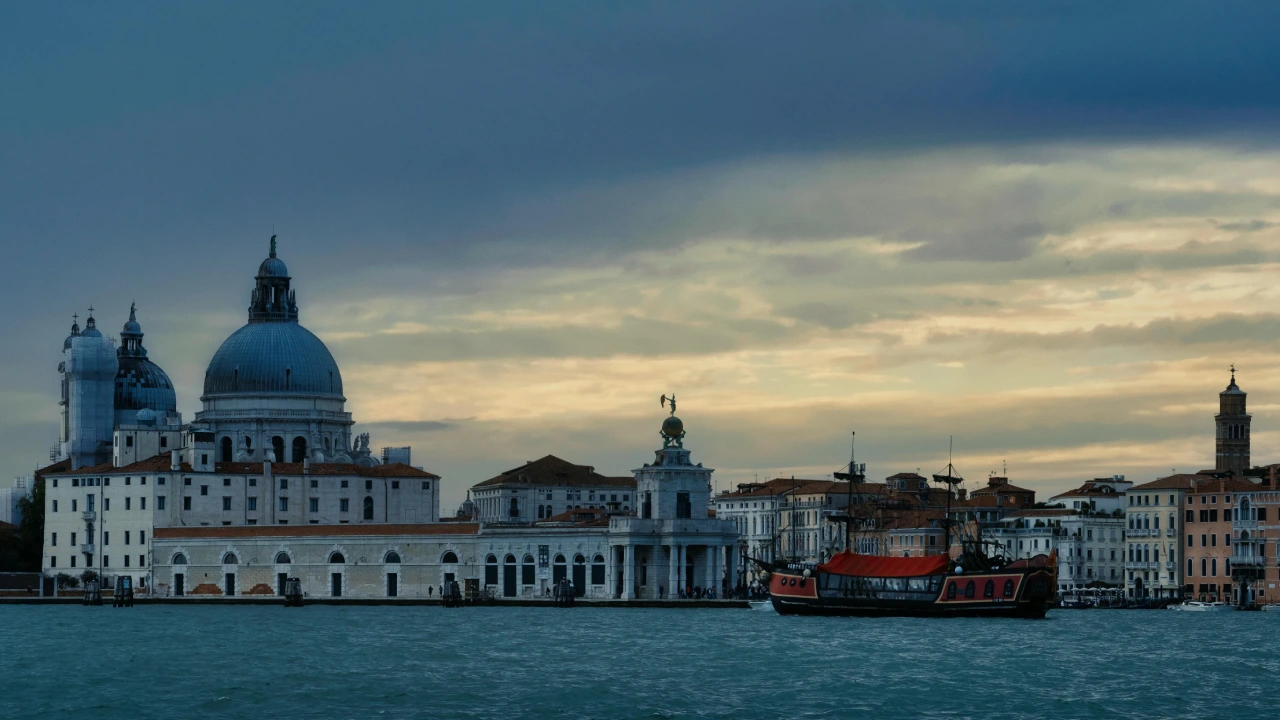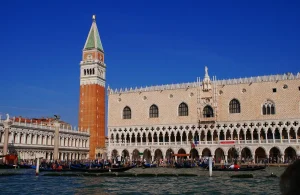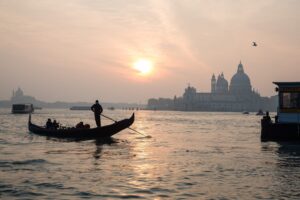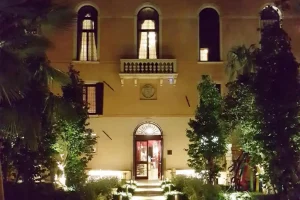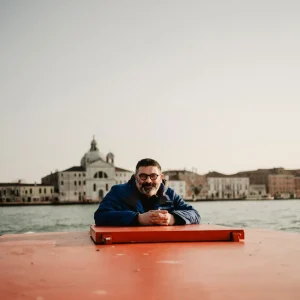Do People Still Live in Venice? Inside the City’s Silent Exodus and Hope for Renewal | Tour Leader Venice
When you picture Venice, you probably imagine bustling piazzas and glittering canals. Gondolas glide, bells chime, and camera shutters echo through narrow alleys. But look closer — beyond the postcards — and you’ll notice something quieter, almost haunting: the locals are disappearing.
In the 1950s, more than 175,000 people lived in Venice’s historic center. Today, fewer than 50,000 remain — less than a third of what it once was. The rest have drifted away to the mainland, leaving behind shuttered windows and silent courtyards.
At Tour Leader Venice, we believe understanding this reality is essential to truly experiencing the city. Venice isn’t a museum — it’s a living organism, fighting to survive in the modern world.
🧍♀️ How Many People Live in Venice Today?
Depending on where you draw the map, “Venice” means different things:
- Historic center: under 50,000 residents
- Lagoon islands (Murano, Burano, Lido, Giudecca): ≈27,000
- Mainland (Mestre & Marghera): ≈175,000
- Entire municipality: about 250,000
But it’s the heart of the city — the islands of canals and bridges — that’s fading fastest. When day-trippers leave at sunset, large parts of Venice fall silent. Streets that once echoed with children now belong to luggage wheels and pigeons.
📉 From Vibrant City to Living Museum
Venice was once a full-time community. Fishermen, merchants, teachers, and artisans shared the same calli. Schools overflowed, laundry hung from every balcony, and evenings smelled of wine and garlic.
- 1950s — 175 000 residents
- 1980s — 120 000
- 2000s — < 70 000
- 2025 — ≈ 49 000
That’s a 70 % population drop in 70 years — one of the steepest urban declines in Europe. Entire districts like Castello and Santa Croce have lost their heartbeat.
😢 Why Are Venetians Leaving?
1️⃣ Housing Costs and the Airbnb Effect
Real estate has always been expensive here, but short-term rentals accelerated the exodus. Apartments once rented to families are now mini-hotels. Neighborhoods like San Marco and Dorsoduro are dominated by key-lockers and rolling suitcases.
With few affordable leases, many young Venetians moved to Mestre. Where children once played soccer in the campo, there are selfie sticks and souvenir carts.
2️⃣ Overtourism Overload
Venice receives more than 30 million visitors a year — on peak days, 70 000 crowd the city, outnumbering residents daily. Tourism sustains the economy but strains daily life. Grocery stores close, replaced by trinket shops; rents rise; locals adapt or leave.
Our Off-the-Beaten-Path Orientation Tour reveals this contrast — the last true neighborhoods where Venetians still greet each other by name.
3️⃣ Everyday Logistics: Beauty Meets Frustration
Life without cars sounds romantic until you carry groceries across four bridges in the rain. Every delivery depends on tides, boats, and muscle. Schools and clinics have moved to the mainland; services shrink as residents do.
4️⃣ Climate Change & Rising Waters
Acqua alta — the seasonal flood — now comes more often. Rising seas and unpredictable weather make life precarious. The MOSE barriers have prevented major disasters, but anxiety remains. Some sell their homes rather than risk another deluge.
🚨 What’s Being Done to Save Venice?
🏘️ 1. Affordable Housing Initiatives
Over a thousand public apartments are being restored for essential workers — teachers, nurses, municipal staff — with rents starting around € 490 a month. It’s a small but hopeful reversal of the trend.
💶 2. Tourist Entry Fee
Introduced in 2024, Venice’s day-trip entry fee aims to limit overcrowding and fund maintenance. Critics debate its fairness, but it’s a step toward balancing preservation and tourism.
🚢 3. Cruise-Ship Restrictions
Giant liners once glided past St Mark’s within selfie distance. That route is now banned; ships dock elsewhere, easing waves that eroded foundations. Activists and residents call it a long-awaited victory for the lagoon.
🧑🎓 4. Incentives for Young Venetians
Tax breaks, childcare aid, and start-up grants encourage people under 35 to stay. Universities are fostering innovation labs on the lagoon — from sustainable design to marine research — hoping to rebuild a resident future.
🧭 Venice Today: A City at a Crossroads
At first glance, Venice still feels crowded: gondolas on the Grand Canal, music in St Mark’s Square. But step a few minutes into Cannaregio or Castello and you’ll sense the emptiness — shuttered schools, echoing campi, cats guarding closed doors.
Yet resilience runs deep. Venetians have always been stubborn dreamers. They endure bureaucracy and floods because to leave Venice is to lose a piece of oneself.
Some revitalize their heritage through art and craft. Visit our partners on Murano via the Murano Glass Workshop Tour, or explore the quiet rebirth of artisan studios on our Mask-Making Experience.
💡 How Visitors Can Help — and Truly Experience Venice
- 🕰️ Stay longer. Spend nights, not hours. Dawn and dusk reveal Venice’s real soul.
- 🛍️ Support locals. Buy from artisans, eat in family trattorie, and choose authentic crafts.
- 🎭 Join meaningful tours. Discover living neighborhoods through our Cicchetti & Wine Tour or Rowing Experience.
- 📖 Learn before you go. Read about Venice’s ecology, crafts, and history — respect her rhythm.
- 💧 Travel gently. No litter, no rush, no noise. Venice rewards slowness.
Thoughtful travel doesn’t mean less fun — it means more meaning. Every mindful choice helps the city breathe.
🩵 Venice Through Local Eyes
At Tour Leader Venice, our mission is to reconnect visitors with the human heartbeat of the lagoon. We introduce travelers to the artisans of Murano, lace-makers of Burano, and rowers who still steer with ancient oars. Each encounter keeps culture alive.
Explore with those who live here:
- Private Gondola Ride — see Venice’s beauty from her most iconic craft.
- Orientation Tour — discover where Venetians still live.
- Lagoon Discovery Tour — meet island communities preserving traditions.
💬 Voices of the Locals
“We’ve seen our neighbors disappear one by one. But those of us who remain? We’re not leaving. Venice is more than walls and water — it’s memory.”
— Elisa, born in Cannaregio
“Every visitor who takes the time to listen gives us hope. Venice doesn’t need pity — it needs respect.”
— Marco, glass artisan, Murano
🕯️ Final Thoughts — Can Venice Be Saved?
Venice has always been improbable: built on mud, rebuilt after plagues, reinvented after floods. Its latest challenge isn’t nature — it’s survival as a community.
Saving Venice doesn’t mean freezing it in time. It means keeping it livable — a city of school bells, not souvenir bells. Every euro spent locally, every guided walk, every respectful gesture helps sustain its heartbeat.
Join us in protecting it — not as spectators, but as participants in its ongoing story.
🎟️ Book Your Private Walking Tour — Experience the Real Venice
❓ FAQs — Life & Population in Venice
Why are locals leaving Venice?
High housing costs, overtourism, and everyday logistics make living in Venice difficult. Many move to the mainland, though grassroots projects and affordable housing plans aim to reverse the trend.
Does anyone still live in the historic center?
Yes — around 49 000 residents remain on the islands, many in districts like Cannaregio, Dorsoduro, and Castello. They keep traditions alive through small shops, rowing clubs, and festivals.
How can visitors support authentic Venice?
Stay longer, hire licensed local guides, and choose experiences that sustain artisans — like our Cicchetti & Wine Tour or Mask Workshop.
